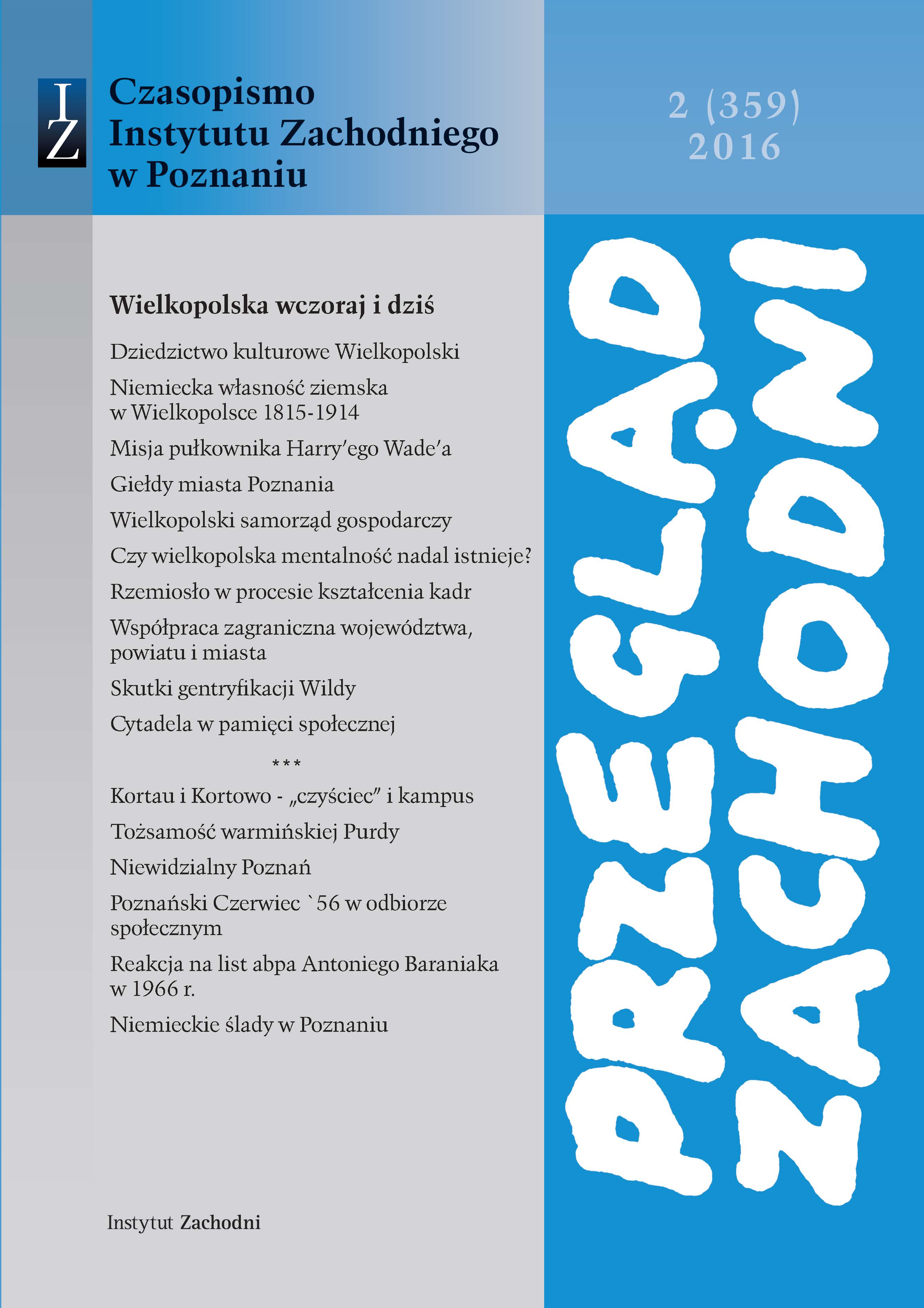Niemiecka wielka własność ziemska w Wielkopolsce w latach 1815-1914
German great landed estates in Greater Poland in the years 1815-1914
Author(s): Fryderyk MudzoSubject(s): History, Local History / Microhistory
Published by: Instytut Zachodni im. Zygmunta Wojciechowskiego
Keywords: Greater Poland; great landed estate; Prussian partition; Polish-German antagonism; Prussia, Junkers; gentry
Summary/Abstract: A great landed estate is defined as a farmstead of a minimum area of 100 hectares, operating either as an independent enterprise or owned by the gentry or wealthy middle class. The functioning of such landed estates (in Germany and under the Prussian partition known as Rittergüter) was closely linked to the ownership structure of past times, when private ownership of land entailed a number of privileges and a high social prestige. The Poznań Province was an exporter of crops and agricultural produce and on account of its geographical and geopolitical location was perceived as part of the East Elbian economy (Ostelbien). At the same time it was an outlet for manufacturers of farming tools and machines from the neighboring provinces (mainly Brandenburg). At the turn of the 19th and 20th centuries the Greater Poland village was dominated by German great landed estates which within the span of a century managed to allegedly permanently link Greater Poland to Prussia and the German state. The participation of German landed estate owners in the economic and social life of Greater Poland in the years 1815-1914 must be assessed as a dynamic process of transformation of the entire Greater Poland within just one century. Those changes were still noticeable in the interwar period when a majority of the landed estate owners assumed Polish citizenship and actively contributed to the economic and political life of the Second Republic of Poland.
Journal: Przegląd Zachodni
- Issue Year: 359/2016
- Issue No: 02
- Page Range: 23-41
- Page Count: 19
- Language: English, Polish

